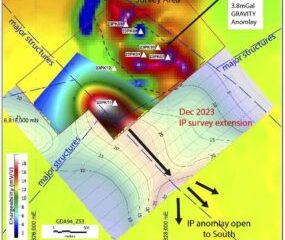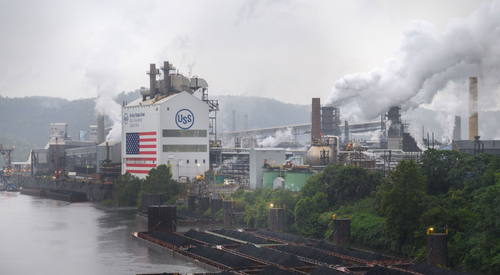Base Metals
IDTechEx: automotive megatrends drive 4.8% CAGR in copper demand to 2034, but wiring harness still dominates
In a new report, “Copper Demand for Cars 2024-2034: Trends, Utilization, Forecasts”, IDTechEx forecasts that automotive copper demand will reach 5MT…
In a new report, “Copper Demand for Cars 2024-2034: Trends, Utilization, Forecasts”, IDTechEx forecasts that automotive copper demand will reach 5MT (1MT = 1 billion kilograms) of annual demand in 2034. Autonomy and electrification will drive the growth from today’s demand, but the component that dominates the demand will still be the wiring harness.
Locations of copper in an electric car with sophisticated autonomous sensors. Source: IDTechEx
The wiring harness is the central nervous system for a car, connecting all the sensors, actuators, lights, and more to the vehicle’s brains. Each component in the system will require multiple wires responsible for communication and power delivery. With vehicles today being so complex, containing hundreds of wired components, the wiring harness has expanded to thousands of individual wires, totaling kilometers of overall length.
Some players, like Tesla, are working hard to optimize the networking of the vehicle, cutting out system redundancy, thousands of meters of cables, and kilograms of weight per vehicle. This can be helped with a system architectural change.
Tier 2 suppliers, like NXP, foresee an emerging zonal architecture approach where wired components are grouped by location rather than function. This can help to eliminate redundancy in the wire harness, but IDTechEx has heard from industry players that making the most of zonal architectures requires more of a harness-first mindset rather than the wiring being an afterthought.
Optimization is only one of the threats to copper consumption in vehicles, substitution with aluminum, 48V systems with smaller gauges, and even wireless communication are all set to reduce copper in the wiring harness. These reduction factors are countered by the increasing complexity of vehicles and the general size growth of vehicles, as larger SUVs become ever more popular.
IDTechEx’s report forecasts how these factors will evolve over the next ten years and how they will impact copper demand in the automotive industry.
Electrification will be the biggest boon to copper demand for cars. Copper is used throughout electric vehicle powertrains, from foils in each cell of the battery to the windings of an electric motor. In total, each electric vehicle can generate over 30kg of additional copper demand.
Like with the wiring harness, the copper demand in the electric components is set to change. Future lithium-ion chemistries and technologies will have an impact on the copper intensity of cells, with higher energy cells typically returning lower kg/kWh copper intensities. In the motor, IDTechEx has seen recently revised interest in permanent magnet-free motors because of neodymium price volatility. Wound rotor synchronous motors are one example where the permanent magnet is effectively replaced with copper electromagnets, nearly doubling the copper intensity compared to regular permanent magnet motors.
Advanced driver assistance system (ADAS) features and autonomous driving are more trends that will generate more demand for copper in vehicles. These systems rely on a suite of sensors, including cameras, radar, and LiDAR. Each of these adds extra wiring in the vehicle and utilizes copper in their internal circuit boards. While the copper per sensor is relatively small, normally a little over one hundred grams, the total copper sums to a few kilograms for highly automated vehicles packed with tens of sensors.
Waymo, for example, has a total of 40 sensors—a total which is not unusual across other robotaxi players. While these highly automated vehicles will make up a minor part of car sales in 2034, the widespread adoption of level 3 technologies over the next 10 years will be a significant driver in copper utilization for ADAS and autonomous features, IDTechEx said.
Forecast copper surplus disappears. Earlier this week, Bloomberg reported that a forecast surplus of copper going into 2024 has essentially vanished, even potentially pushing the market into a deficit.
In the past two weeks, one of the world’s biggest copper mines was ordered to close in the face of fierce public protests, while a slew of operational setbacks has forced one of the leading miners to slash its production forecasts.
The sudden removal of around 600,000 tons of expected supply would move the market from a large expected surplus into balance, or even a deficit, analysts say. And it’s also a major warning for the future: copper is an essential metal needed to decarbonize the global economy, which means mining companies will play a key role in facilitating the shift to green energy.
—“The World’s Copper Supply Is Suddenly Looking Scarce”
Panama’s government ordered First Quantum Minerals to end all operations at its $10-billion copper mine in the country. Anglo American will slash production from its copper business in South America.

White House Prepares For “Serious Scrutiny” Of Nippon-US Steel Deal
White House Prepares For "Serious Scrutiny" Of Nippon-US Steel Deal
National Economic Adviser Lael Brainard published a statement Thursday…
How to Apply for FAFSA
Students and families will see a redesigned FAFSA this year. Here’s how to fill it out.
Dolly Varden consolidates Big Bulk copper-gold porphyry by acquiring southern-portion claims – Richard Mills
2023.12.22
Dolly Varden Silver’s (TSXV:DV, OTCQX:DOLLF) stock price shot up 16 cents for a gain of 20% Thursday, after announcing a consolidation of…

















